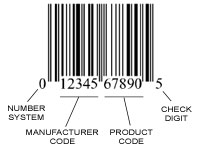- What is its value if it is interpreted as an unsigned integer?
Show your work.
- What is its value if it is interpreted as a signed integer?
Show your work.
-
Write this value in hexadecimal.
- The binary value: 110.01011
(HINT: First, convert this into the following form: 1.______ × 2exponent) - +infinity
(HINT: You can use the Internet to research this question.)
-
Decode the following Hawaiian word that was encoded into binary using the
given Huffman tree: 0001011000111110000100110.
Once you decode the word, you can use RubyLabs to check your answer:
>> include BitLab => Object >> f = read_frequencies(:hafreq) => {"K"=>0.106, "W"=>0.009, "L"=>0.044, ... } >> tree = build_tree(f) => { 1.000 { 0.428 { 0.195 { ... } } } } >> hc = assign_codes(tree) => {"K"=>001, "W"=>110010, "A"=>10, ... } >> encode(INSERT_YOUR_ANSWER_HERE, tree) => 0001011000111110000100110See sections 7.4 and 7.5 for more information on how to build a Huffman tree, and how to encode and decode messages using RubyLabs.
(NOTE: Be sure you understand what each of the steps are doing above. Read through the relevant sections for a thorough explanation and try out the tutorial in the textbook for yourself.)
-
The Hawaiian alphabet has 13 characters (5 vowels, 7 consonants and 1
apostrophe). If we used a fixed-width encoding
for characters (i.e. every character is encoded using the same number of
bits), we would need a 4-bit code for every character so we could get at
least 13 unique codes for the 13 characters of the Hawaiian alphabet:
A 0000 U 0100 L 1000 W 1100 E 0001 ' 0101 M 1001 I 0010 H 0110 N 1010 O 0011 K 0111 P 1011
Go to Popular Hawaiian Words and Phrases. Find a word that would be longer if encoded with the Huffman tree than with the 4-bit fixed-width code above. Give the encoding using the Huffman tree and the 4-bit fixed-width code above to justify your answer.
- In general, when do you get shorter binary encodings using Huffman trees?

The check digit is computed using the following algorithm:
1. Add the first, third, fifth, seventh, ninth and eleventh digits of the UPC barcode and store this result in x. 2. Add the second, fourth, sixth, eighth and tenth digits of the UPC barcode and store this result in y. 3. Set z equal to the last digit of the value 3x + y. 5. If z is not equal to 0, then set check_digit equal to 10 - z. Otherwise, set check_digit equal to z.
-
Determine the check digit needed to complete the following UPC barcode:
32390001453_
-
We are given the following 12-digit UPC barcode:
718123006804
Is there an error in the barcode? Show your computation to justify your answer.
-
The RGB color for goldenrod is given in hexadecimal as DAA520.
Express the red, green and blue values of this color in decimal.
Show your work.
- An image format takes a 24-bit RGB image and compresses it as follows. For each pixel, we average the red, green and blue components and store only this average. This yields a file that is one-third the size of the original image file. Is this compression algorithm a lossless or lossy compression technique? Explain.
(X and Y) or (Y and (not Z)) (not (X or (not Y))) and Z
i = 0
sum = 0
while i != 10 do
sum = sum + i
i = i + 1
end
We can also write this code equivalently using an until loop:
i = 0
sum = 0
until i == 10 do
sum = sum + i
i = i + 1
end
Use DeMorgan's Law to convert the following while loops to equivalent until loops.
-
while (x >= 40) and (y < 68) do ... end
-
while (a != 15) or (b == 110 and c <= 112) do ... end